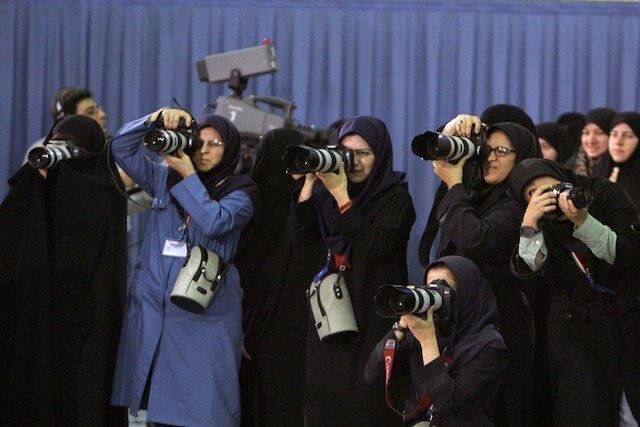Iranian women empowered after Islamic Revolution
Women from the Leader's point of view - Part 16

TEHRAN – The status of women in various fields was improved after the Islamic Revolution and women, as half of the country’s population, have been leading in many fields.
After the victory of the Islamic Revolution in February 1979 by toppling the Pahlavi regime [the last Iranian royal dynasty, ruling for almost 54 years between 1925 and 1979], women were given equal rights to shape their futures. The Islamic Revolution provided them a chance to build their distinct identity and they have been tremendously successful in doing that.
There were extensive changes in the fields of science, education, economy, employment, and presence in management positions for women. Now a large part of activists in various fields of academia, business, and management are made up of capable Iranian women.
Education as a social value for women is seen as real freedom for them. Illiteracy among women and girls has been nearly eradicated as the literacy rate reached 99.3 percent and the ratio of female to male students has increased by 28 percent.
According to the latest data, nearly 60 percent of all university students are females today. The percentage of women in higher education has increased nearly 21 times since the Revolution.
The notable presence of women in the education sector has had a remarkable impact on the job market of the country as well, with women taking more jobs in both the public and private sectors.
Leader of the Islamic Revolution Ayatollah Seyyed Ali Khamenei in one of his speeches said, “It is wrong to assume, we should prevent women from partaking in economic and social activities with reference to Islam. Islam has not prescribed such a thing. However, Islam has not recommended imposing hard work, tough businesses, or social and political tasks on women, either. Islam has adopted a moderate viewpoint; that is to say, if women have the opportunity and the time, and if it does not prevent them from bringing up their children, if they are enthusiastic and eager and have the physical strength and energy, and if they are willing to take part in social, political and economic activities, they should not be prevented. But if they are forced to take a job and work certain hours per day so that they can have a share in covering the household expenses, this is not what Islam has asked women. Islam considers this as a form of imposition on women.” (September 18, 1996)
The labor force of the country today consists mostly of women specialists, which indicates that women are playing an important role in shaping the future of Iran.
A report by the World Bank shows that the number of female board members in various organizations has seen a three-fold increase, growing from 11 percent in 1970 before the Revolution to 30 percent in 2016 after the Revolution.
During the last 44 years after the Revolution, the number of female faculty members in universities has grown more than 17 times. The share of women in university faculty members has increased by 33.3 percent, and in medical sciences universities by 34 percent.
Only 1.4 percent of teaching staff was made up of women before the Revolution and now the number stands at above 24 percent in higher education.
A ten-fold increase in the number of women doctors could be seen between 1979 and 2012, according to some data, and nearly 40 percent of all specialized physicians in Iran today are women.
Leave a Comment